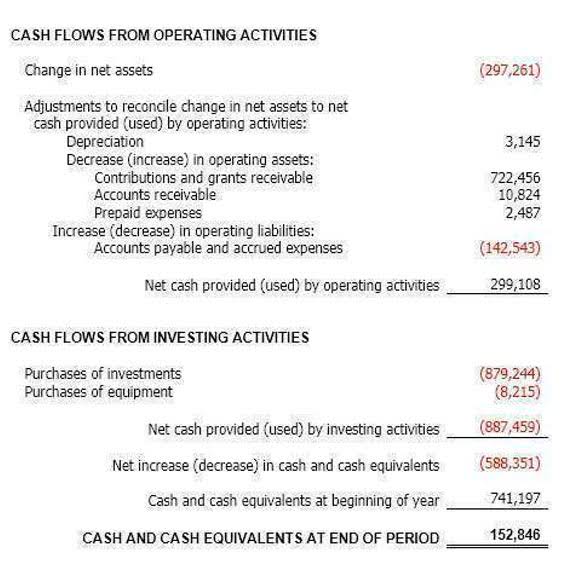Proven Strategies to Increase Brewery Revenue and Profitability

A restaurant owner might need to replace a dishwasher, while a brewery owner might need to replace a $30,000 water tank. Overall, implementing AR software can be an effective way for breweries to reduce costs, increase cash flow, and gain valuable insights how is sales tax calculated into their business operations. By choosing a reliable software provider like Notch, breweries can streamline their billing and collection processes and take their business to the next level. Another important aspect of financial record management is tracking profits through P&L (profit and loss) statements.
Sell directly to consumers
Gaining a comprehensive understanding of potential cost-saving opportunities is brewery accounting essential for determining how to make a particular brewery profitable. By proactively exploring strategies to decrease these costs, brewery owners can enhance their profit margins and overall profitability. Large corporate beermakers such as Anheuser-Busch and MillerCoors recognize the appeal of craft beers and have diversified their product portfolios. Names like Terrapin Beer and Goose Island are craft brews from these corporate giants. But connoisseurs of the best craft beers are looking for more, and smaller craft breweries are bringing it to them.

Understanding Beer Production Costs
- A brewpub or taphouse represents a harmonious blend of two business models – a restaurant and a brewery.
- Expanding discretionary income and population growth in the 18 to 25 year old group has offset the trend of falling per capita alcohol consumption.
- In other words, you have to know how much revenue you have to generate to break even and make a profit.
- We recommend working with an experienced brewery accountant to choose the best financing option for your business.
He’s used to paying $20 for a 12-pack but he reluctantly pays $40 for a 12-pack of craft beer at your online store. Though he likes the taste, it strains his wallet — he can only buy your beer on special occasions. Imagine you’ve spent the last two months brewing 1,200 6-packs of limited-edition beer. In the flurry of advertising, selling and distributing your beer, you’ve discovered that there packs hidden away in the storeroom — they’re 3 weeks away from their “best by” date. You need to sell these leftover packs of beer at a heavily discounted price in order to move the stock and avoid a write-off. The global premium beer market value is expected to reach US$55.86 billion by 2024.
Keep track of total costs
- Financial risks and management are also critical in understanding how they impact revenue.
- Whether you are a consumer or a prospective investor, gaining knowledge about the profit margins in the beer industry enables you to make informed decisions while enjoying your favorite brew.
- Economist Richard Thaler found that customers were willing to pay more for a Budweiser if they knew it was coming from an upscale hotel versus a run-down grocery store.
- However, by implementing strategies to boost revenue and minimize costs, breweries can work towards improving their profit margins over time.
- Everyone loves metrics and benchmarks, so let’s talk about these as they relate to beer costs.
- It’s also important to make sure that your brewery is advertising and spreading the word about the quality and price of your craft beer.
- And even more so in the microbrewery industry, because the number can vary greatly depending on your business configuration.
Breweries must provide appealing incentives to attract the kind of employees who will uphold the quality of their products. Investing in skilled and dedicated staff members is crucial to maintaining product consistency, customer satisfaction, and overall business success. Downtown real estate tends to come with higher costs, but it provides a dual-purpose benefit, serving as both a brewing location and an eye-catching advertisement display for the business. Weighing these costs and benefits is essential when determining the optimal location for your brewery and its tasting room. The choice of real estate can greatly impact a brewery’s profitability—especially its tasting room venture. When considering starting a tasting room, the selection of real estate becomes a crucial factor.

How Much do Breweries Make?

To increase profit margins, bar owners can decrease pour costs, increase menu prices, control food and labor costs, or minimize operating costs. Effective inventory management and standardized drink recipes can also help to maximize profitability. The average markup on beer is about 200% to 300%, but this depends on the type of beer and the establishment. The profit margin for bottled beer is around 75%, while the profit margin for draft beer is about 80%. The average gross profit margin for bars and nightclubs (on-trade) is 70% to 80%. According to the US-based Brewers Association (BA), “2022 presented small brewers with a number of challenges, including rising operating and material costs and increasing competition” 1.
- According to industry data, small to medium-sized breweries, often known as microbreweries or craft breweries, can see annual revenues ranging from $100,000 to over $2 million.
- To increase profit margins, bar owners can decrease pour costs, increase menu prices, control food and labor costs, or minimize operating costs.
- The brewery’s survival and long-term growth depend on its ability to achieve and sustain the necessary level of profitability.
- As U-niqueaccounting mentions, usually it takes 3 years for a new brewery to become profitable.
- The scale of distribution can vary greatly, from local to national levels, depending on the brewery’s production capacity and marketing reach.
- For example, Daisy is a brewpub owner and she orders packs of beer from her brewer for $150, and wants to have a pour cost of 20%.
Overall, effective financial record management is essential for breweries looking to improve their profit margins. You add up all your production costs, fixed and variable, and then apply a markup percentage to get the final price. For example, it costs you $30 to make a six-pack of beer and you want to make a profit of $15 on each sale. Brewers feel that selling through distributors (i.e. off-trade) delivered lower profit margins, according to a 2019 SIBA report.

Developing a broader product Accounting for Churches portfolio can attract different customer segments and open new markets. For instance, introducing low-alcohol or non-alcoholic brews can capture health-conscious consumers, while seasonal flavors or limited-edition releases can generate buzz and foster customer loyalty. Expansion into related product categories such as ciders, hard seltzers, or even craft sodas can also appeal to a wider audience beyond traditional beer drinkers. Compared to similar business models such as a restaurant or bar, breweries are extremely profitable. There are times when revenue is an equally important metric, such as when you are selling the business, as it indicates your overall growth and ability to attract sales. Or are too many business owners jumping into the brewing industry only to end up stressed and out of cash.
What brewery makes the most money?
So, in the early years, it is recommended to focus more on building a growing, stable foundation instead of profitability. Even though it’s normal for breweries to report on-the-books losses, it’s important to keep your actual cash flow pretty stable. If you see any cash problems, it’s a good idea to get help from an experienced brewery accountant before your business runs into serious financial trouble. They can analyze your business model and operations, helping you identify opportunities for optimization and increased profitability. Breweries need special equipment and machinery to make beer, and these things definitely cost you money. So, what type of brewery equipment you use impacts the overall costs of a brewery startup and hence directly influences the profitability.

